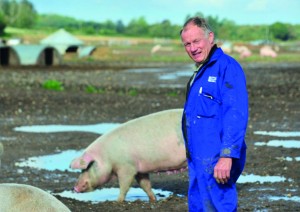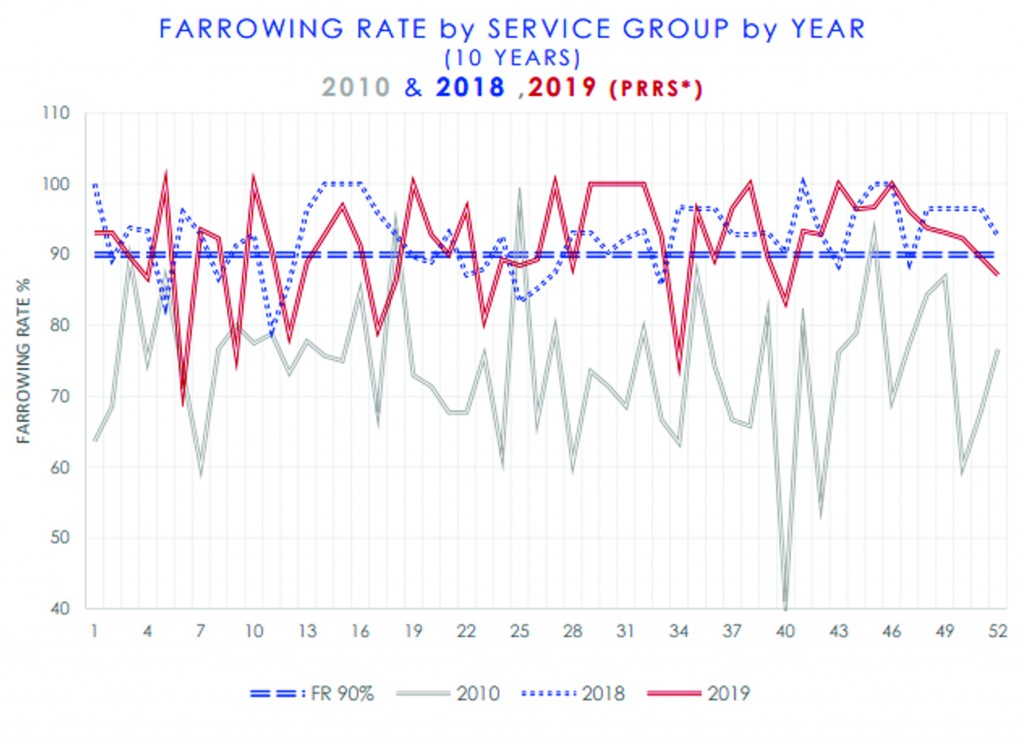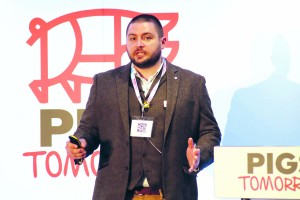AHDB explains how a concept rooted in manufacturing processes in Japan could be applied to create leaner and less wasteful production processes for hog businesses
Lean management was developed by the Japanese to help rebuild their automotive industry after World War II and has been used by countless industries, including, more recently, agriculture and horticulture.
It may seem unusual at first, but AHDB is investing in a hands-on program to better understand the benefits of lean management techniques for pig farmers.
Lean management focuses on creating a lean production process that is less wasteful and generates the most value possible. It’s a commitment to continuous improvement.
“It’s always worth looking outside of our own industry and borrowing the experience of others,” said Ben Williams, AHDB’s Senior Director of Knowledge Transfer.
“The fact that we are dealing with living animals, plants and biological processes means that there is always some degree of variability, but we can always better control our production systems. It can be complex, but lean management gives us a proven set of tools to determine exactly how well our pig farms are currently performing and how we can adapt and improve.”
Resilience
“The industry is constantly changing, with customer demands, market volatility and disease risks to manage,” Mr Williams said. “We must continue to drive productivity, especially in terms of labor units, as the financial output per hour of the agricultural industry is generally lower than most.”
Ben Williams
“Using lean management allows companies to better control their systems, improve performance, and provide greater resilience to face challenges.”
With the help of Neil Fedden and his team at lean management consultancy Fedden USP, AHDB will test the lean philosophy on 10 of its Monitor farms through its new SmartPork program to see how it can benefit pig businesses.
Progress and results will be shared across the industry, online and through pig clubs so others can learn new tools to try in their own business.
Mr. Fedden will provide theoretical and practical training to unit leaders over the next 12 months. Each farm will undertake process control and improvement of its gilt management and/or weaned gilt management to increase gilt retention and weaning weights, with proven returns on investment.
AHDB’s similar SmartHort project has achieved an 18:1 return on investment across all horticultural businesses involved over the past three years.
Another example of lean management in practice of a cattle unit saved £40,000, after identifying practical changes to feeding routines such as reducing stocking density and overgrazing and putting more emphasis on winter forage.
Practical support
“The more we can simplify and remove variation from the pig production process, the easier it is to standardize how routine tasks are done,” Fedden said. “The goal is to make everyday life easier and more enjoyable and help the team achieve more consistent results.”
Unit leaders are at the heart of the SmartPork programme, and they will complete an apprenticeship with a recognized qualification at the end of it.
There will be six days with a Lean expert in the classroom and four times more on the farm, or via video call, to support the implementation. Fedden USP’s consulting team will fit into the routine of the farm and can join a lunchtime meeting or discussion at any other time as needed.
“The first thing we will do is a walkthrough, which maps out everything that happens on the farm, all the daily work and processes,” Fedden explained. “You can draw a site-wide layout and add notes, so it’s easy to visualize. We then use a method called “seven trash plus one” to find and categorize all trash areas on the map and think about how daily tasks could be better organized.
“Classic areas are transporting food and materials and walking from job to job – all of these are time consuming and could be deployed to other tasks that will have more of an impact on performance, such as examining the key performance indicators of pigs and what’s affecting them.”
Managers will then consider how to prioritize which areas to change first, focusing on those that will yield the fastest and greatest return on investment. They will learn how to do a cost/benefit analysis of a proposed action plan.
The process followed is “plan, do, check, act”, allowing teams to review how well it works and modify it if necessary before standardizing it – their goal is to establish an efficient way of doing things that will become routine over time.
“It’s important to make sure everyone in the unit has a role, so there’s not too much of a burden on the leader and to help everyone understand why things are done and feel the reward” , said Mr. Fedden.
“Sometimes a manager might ask a few team members to do a mini-project or a trial and share their suggested plan with the rest of the team. Guidance is given to managers on how to set up an experiment without expose the company to too great a risk.
“We want to help managers through a complete Lean process on their farm so that at the end they feel like they can build on it and carry on with the Lean skills themselves. In addition to business improvements, the training will also benefit individuals and their own development.
SmartPork will provide a few days off the farm for owners to see lean in other industry contexts and provide the opportunity to discuss value stream mapping with Neil, reviewing higher level goals and financial impact. SmartPork is also tied to AgriLeader, as people management skills are key to implementing lean management effectively.
More time for breeding – on-farm case study
A number of efficiencies have been achieved by staff at Yorkwold PigPro pig production company. For example, they saved time after tracking the number of times they had to walk between the AI refrigerator, the farm office, and the service area.
Their solution was to put a small fridge in the serving area, big enough to store the amount they needed for the day, production manager Phil Harman explained.
“Often you keep working the same way until you find time to stop and ask questions about why things are done and how they could be improved,” Harman said. .
“Making routine tasks like serving or bedding more efficient frees up more time for storage. For example, an extra person could now come to the maternity ward earlier and, over time, help reduce pre-weaning mortality.
Work plans for daily routines are also in place to ensure the right people are doing the right job, based on their individual strengths and experience, contributing to confidence, motivation and efficiency of the team.
The company saved on transportation costs when it began coordinating deliveries of complementary feeds to four of its farms. “We just had to make sure each farm was ordering at the same time so they could arrange to put them on the same truck,” Mr Harman said.
Taking Control – Farm Case Study
Pig producer Simon Watchorn shared his perspective and experience with lean management in his free-range herd.
“We are not producing just any old pigs, but a steady stream of numbers, at as even weight as possible and as healthy a population as possible, for as little money as possible. This whole ‘process’ requires control, and if you don’t control it, it will control you,” he said.

Simon Watchon
“The gray line on the graph below shows the variance and volatility of my farrowing rate before I introduced lean techniques and controlled my processes. The blue (dotted) line shows the effect of these changes. My farrowing rate is much tighter, as are other important KPIs, including pigs born alive.
“Even more powerful is the red line, which is my farrowing rate while dealing with a difficult PRRS outbreak; using lean process control has allowed my business to be agile enough to react and cope. to the increased pressure.”

- Get more information by visiting org.uk/smartpork
- This article is from the May issue of Pig World magazine which you can subscribe to here.






More Stories
rice production process in east China’s Jiangxi – Xinhua English.news.cn
Michelin describes ‘transformational changes’ to tire factory operations
Cellforce finalizes the electrode coating production process